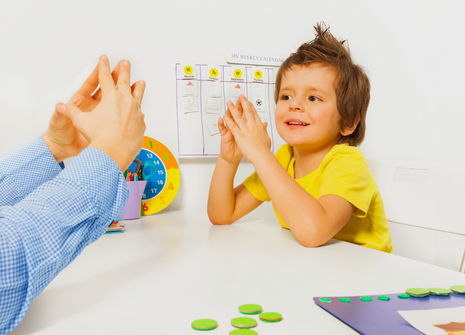As a form of therapy, applied behavior analysis (ABA) focuses on improving specific behaviors, including social skills, communication, reading, and academics, as well as adaptive learning skills, including motor dexterity, hygiene, grooming, domestic abilities, punctuality, and job performance.
As a result of ABA, behaviors and skills can be significantly improved, and the need for special services can be reduced.
The Following Are Some Of The Benefits Of Aba For Children:
- The early experiences of a child have a significant impact on their brain development, which is why therapy that begins as early as possible can greatly improve their chances of succeeding in life and school. Researchers have found that children who begin ABA before the age of five gain significant cognitive and adaptive abilities.
- When compared to other methods, learning basic skills such as communication, self-care, and social skills improves greatly.
- Before developing activities and rewards to teach children, ABA therapists will work closely with children and understand how the child learns, why certain behaviors occur, and where improvement is needed.
- By improving focus, memory, and IQ, ABA has shown to significantly improve academic performance. In addition, non-verbal communication skills, language skills, and the ability to speak have been shown to be improved by this program.
- When applied to children who are prone to self-harm and wandering, ABA results in a substantial reduction in problem behaviors.
Exactly How Does It Work?
Your child’s ABA therapy for autism is tailored to meet their specific needs and consists of the following phases:
1. Consultation and Assessment
As a first step, the therapists perform a functional behavior assessment (FBA) on your child. Your child’s abilities, strengths and challenges will be discussed, as well as their communication, behavior, and life skills will be observed. There is even a possibility that they will observe your child in school and come up with strategies that should be incorporated at home.
2. Development of Plan
An initial consultation assists the therapist in developing a formal treatment plan for your child. Interventions would be tailored to your child’s individual needs in order to meet the treatment goals. It is generally the goal of these programs to decrease problem behaviors such as self-injury, and tantrums, build life skills, and improve communication skills.
3. Parent/Caregiver Training
In addition, it is imperative to train caregivers, parents, and teachers in practices that reinforce the desired behaviors outside of therapy. In addition to learning methods that assist in the work that goes into therapy, you will also learn how to reduce counterproductive behaviors such as giving in to tantrums.
4. Evaluation and Change
During therapy, the therapist will attempt to identify the causes of problem behaviors and work with your child to improve or change them. Your child’s response and performance may even change the approach during therapy. The therapist will be able to determine what works and what needs to be changed by monitoring and evaluating the treatment frequently.
How Can Aba Benefit Children?
These common learning outcomes are included in ABA programs:
1. Receptive Language Skills
This refers to how well your child understands language and responds to what is asked of them. Examples include giving me the yellow car, touching your nose, or opening the book to page ten, among others.
2. Expressive Language Skills
As a result of ABA, spoken language skills can be improved. The ability to imitate sounds, words, or sentences will be developed in your child. As well as learning the names of objects, animals, and other things, they will also learn the names of other things.
3. Social Language Skills
A child’s social language skills demonstrate his or her ability to interact with others through the use of language. You might ask someone to play with you or share items with a friend as examples of asking a simple question.
4. Self Help Skills
Your child will be able to use the toilet independently with the help of self-help skills. Furthermore, it includes the ability to eat, drink, and dress independently.
5. Academic Skills
It relates to the extent to which your child is able to participate in classroom activities. Waiting for their turn in a group activity, requesting skills, and transitioning between activities are all necessary skills for this age group.
6. Decrease Challenging Behavior
When your child exhibits challenging behaviors, such as biting, kicking, shouting, throwing and ignoring instructions, it is difficult for your child to socialize with others. As a result of ABA treatment, appropriate behaviors are strengthened that make them socially acceptable.
ABA therapy is available at Hope AMC Center in Dubai, and we have trained professionals and therapists that can assist your child.






